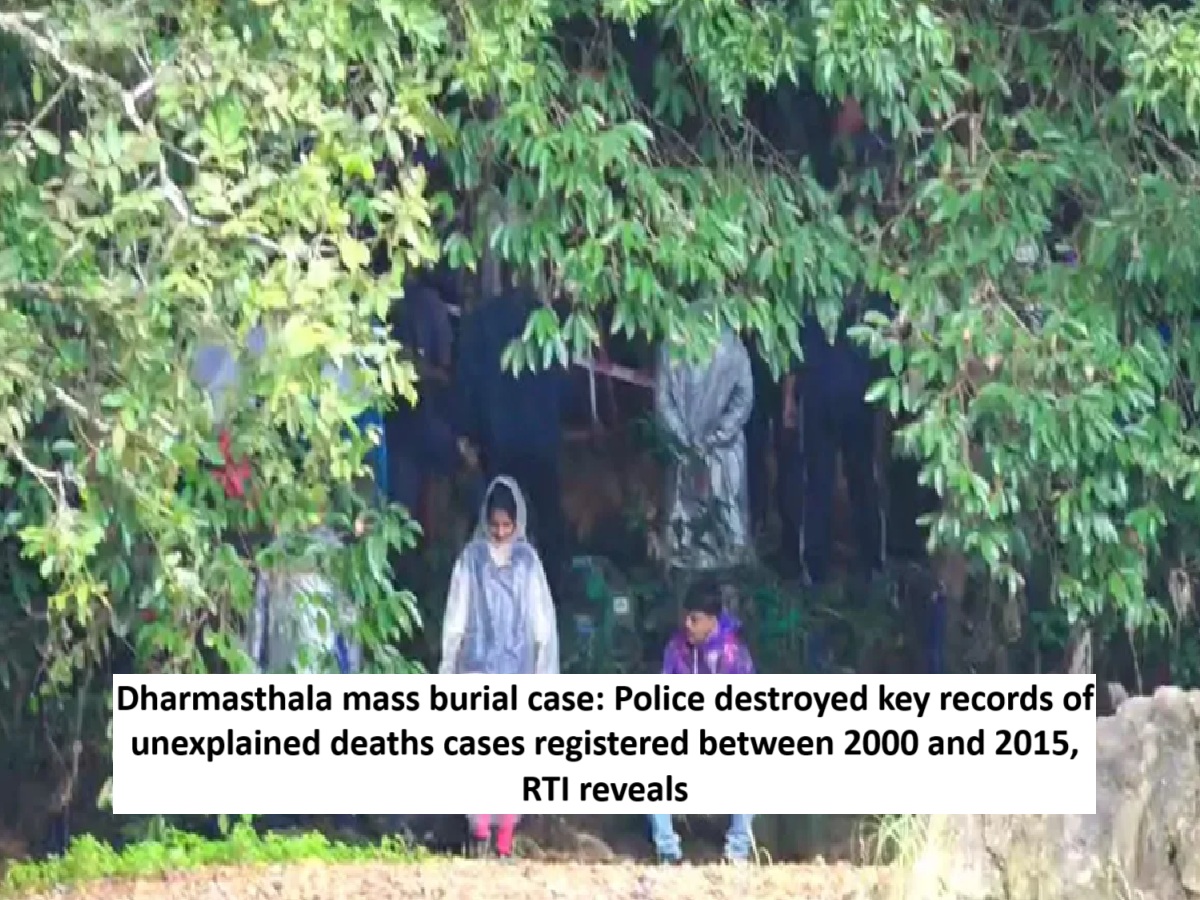
News Topical, Digital Desk : A shocking revelation has come to light in the Dharmasthala mass burial case. An RTI inquiry has revealed that the Belthangady police destroyed key records of unexplained death cases registered between 2000 and 2015. This time frame almost exactly coincides with the period during which a man had alleged that several bodies were buried around the Dharmasthala temple that falls under the police station limits.
Many questions are arising
The erasure of records has raised many questions after the complaining witness claimed that between 1998 and 2014 she was forced to bury and cremate the bodies of women and minors, many of whom, according to her, bore marks of sexual assault.
In response to an RTI application filed in this regard, the police said that the post-mortem reports, wall posters, notices and photographs used to ascertain the identity of the deceased persons were destroyed as per regular administrative orders.
The RTI application specifically sought details of cases of unexplained unnatural deaths registered under Section 174(A) of the Code of Criminal Procedure (CrPC) over a period of 15 years. The Public Information Officer of the Belthangady police station replied that those records were no longer available as they had been disposed of under various circulars and procedures.
Citing Standing Orders No. 762/759 and 874, as well as Record Destruction Procedure No. 400 of the Karnataka Financial Code, the official also cited a notification of the Karnataka Government Secretariat dated June 26, 2013, and a more recent order issued by the Superintendent of Police dated November 23, 2023. Necessary action will be taken in respect of the remaining cases, the letter concluded.
a matter of concern
Legal experts and civil society groups have raised concerns about the legality and ethics of such destruction. They argue that police stations have no authority to destroy records of criminal cases, especially those involving unnatural deaths, which should be preserved in the public interest.
The move is particularly worrying as the Dakshina Kannada district is one of the most advanced districts in Karnataka in terms of digitisation. Critics are questioning why the records were not digitised before destroying them, especially when they contain sensitive information of unidentified individuals whose families are still searching for them.
The policy team based in Kalmethadka in Kadaba taluk, which had filed the RTI application, has expressed disappointment over the reply and raised concerns about the impact on justice, transparency and the rights of the affected families. On the other hand, the excavation work is going on at Dharmasthala on the identification of the witness complainant. The witness complainant had claimed that he had buried several bodies at 15 different places.
So far, SIT has identified 13 places and completed the excavation work at 10 places but human remains have not been found anywhere except at place number 6. The lawyer of the witness complainant has appealed to the government and SIT to scan the entire area with the help of ground penetrating radar because the witness complainant had left from here in 2014 and due to it being a hilly area and heavy rains in the area, landslides are possible, therefore, human remains have not been found in large numbers at the place mentioned by the witness complainant. It is possible that they have buried deeper into the ground or have shifted to some other place.
--Advertisement--

 Share
Share



